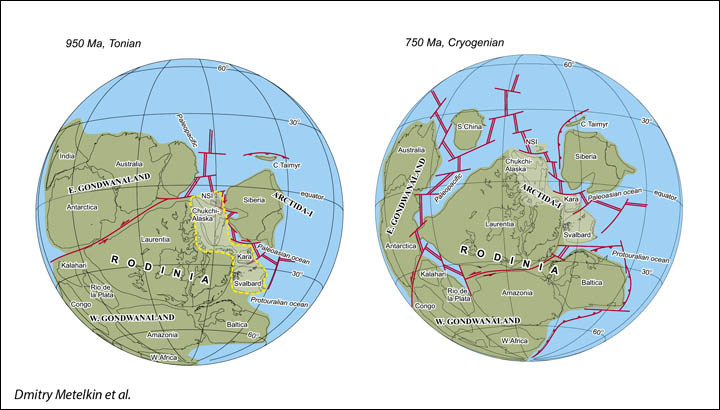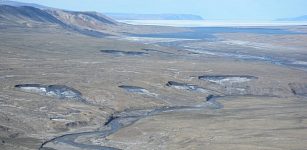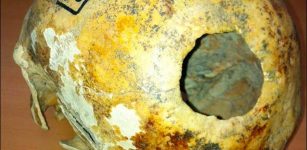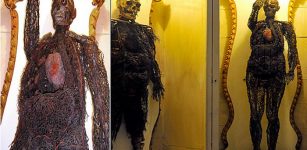Remnants Of The Lost Polar Continent Arctida-1 & Arctida-2 Still Exist – Scientists Say
MessageToEagle.com – Remnants of this land mass still exist in Russia, the US, Canada and Greenland, says groundbreaking new research.
The modern Arctic, unlike the Antarctic, has no land mass under its ice, but this was not always so: twice in the evolution of our planet, there was a continent in the Arctic. Previously, it was thought there had been a continent here only once. New research from leading Siberian scientists has established firm proof of the continent, but also that it existed twice.
The findings appear to support Russia’s claim to rights to the Arctic shelf, a topical subject due to competing claims for rights to exploit mineral rights by countries bordering the polar region.
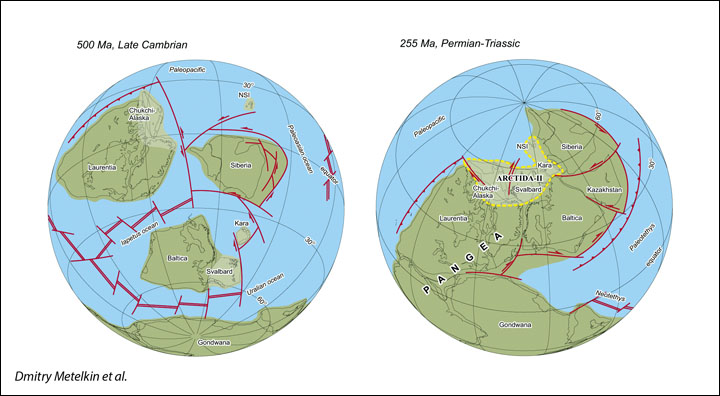
The initial polar continent – Arctida-1 – was formed around one billion years ago before breaking into separate fragments some 750 million years ago. Then, 250 million years ago, when the supercontinent of Pangea was formed, Arctida-2 was formed with a different structure, before breaking up again. The scientists studied the ancient magnetic field of rocks to ascertain their position at the time of their formation.
As a result, they say that fragments of the long-gone continent are found in today’s Franz Josef Land, the Spitsbergen Archipelago, the shelf of the Kara Sea, including the Severnaya Zemlya Archipelago, the northern coast of the Taimyr Peninsula, the New Siberian Islands, the shelf of the East Siberian and Chukchi Seas, the continental territories of Chukotka and northern Alaska, islands of North America, including Ellesmere and others near Greenland.
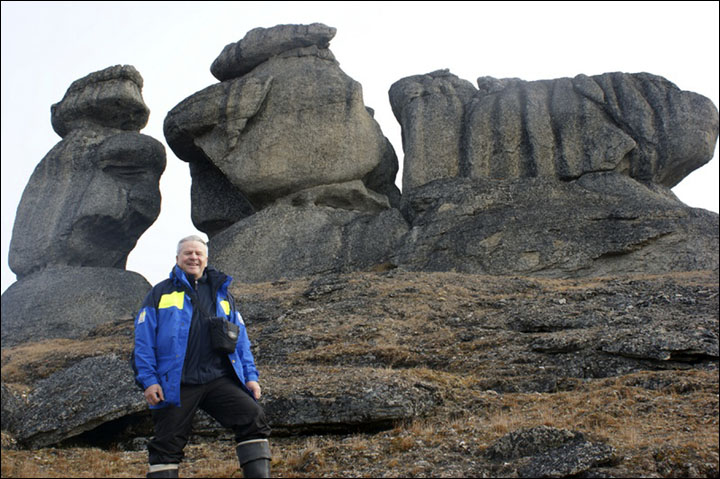
The study is published in the prestigious international journal Precambrian Research in an article co-written by Professor Dmitry Metelkin, deputy head of the Chair of General and Regional Geology at Novosibirsk State University (NSU), Professor Valery Vernikovsky, dean of the Department of Geology and Geophysics at NSU, and Dr Nikolay Matushkin, deputy dean of the Department of Geology and Geophysics at NSU.
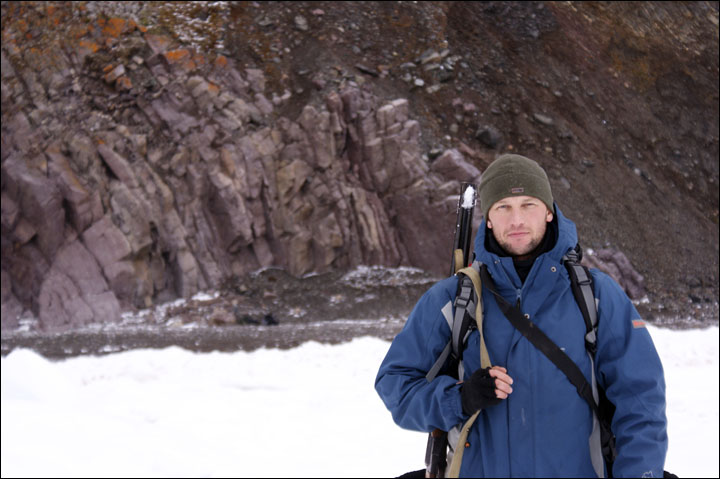
‘Analysis of the data showed that in the geological history of the Arctic there were at least two continents, not one as was previously thought,’ said Dr Metelkin. ‘According to our model, the first continent, called Arctida-I, was formed one billion years ago. It was a part of a larger supercontinent called Rodinia, which united all known ancient continental blocks.
‘About 750 million years ago, the supercontinent Rodinia broke up. Arctida-I, too, was divided into fragments, which mainly drifted on the periphery of the Siberian paleo-continent, which was then near the equator. The rebirth of Arctida happened at the turn of the Mesozoic period, about 250 million years ago. This is the time in Earth’s history when another supercontinent was formed, called Pangea.
‘Components of Arctida-2 were the same as before, but their configuration was different and their position in the ancient supercontinent was on the periphery, in fact, on the outskirts of the modern Eurasia.’
He told The Siberian Times: ‘The idea of the existence of this paleo-continent is not ours, it appeared quite a long time ago. It was based on the fact that the blocks which constituted this continent are very similar in their geological structure. That is why it was long considered that they could make up some entity.
‘Our achievement is that we managed to prove this idea with exact data. We found out the position of these blocks within this continent, and found out its structure.’ He explained: ‘Today’s Arctic attracts close attention, foreign researchers also work in this direction and many are involved in paleomagnetic research. Yet I am sure that only we have gathered the paleomagnetic data on the Russian part of the Arctic shelf.
‘In the 1960s data was gathered on the Western Arctic, but theis relate to the earlier geological period. So it is only us who got the data and traced the evolution of this continent for the period from about one billion years ago until 250 million years ago. It is unique research.’ This will now be continued and deepened.
‘The recent model we have made is an intermediate result. We need more information to clarify our conclusions. It is a certain stage in our research, but I am sure that our model will be changed in future as we get more data. This year we have already held new Arctic expeditions, so I presume that soon we will get new data.’
The current model is based on research over two decades, he said.
MessageToEagle.com
Source:

